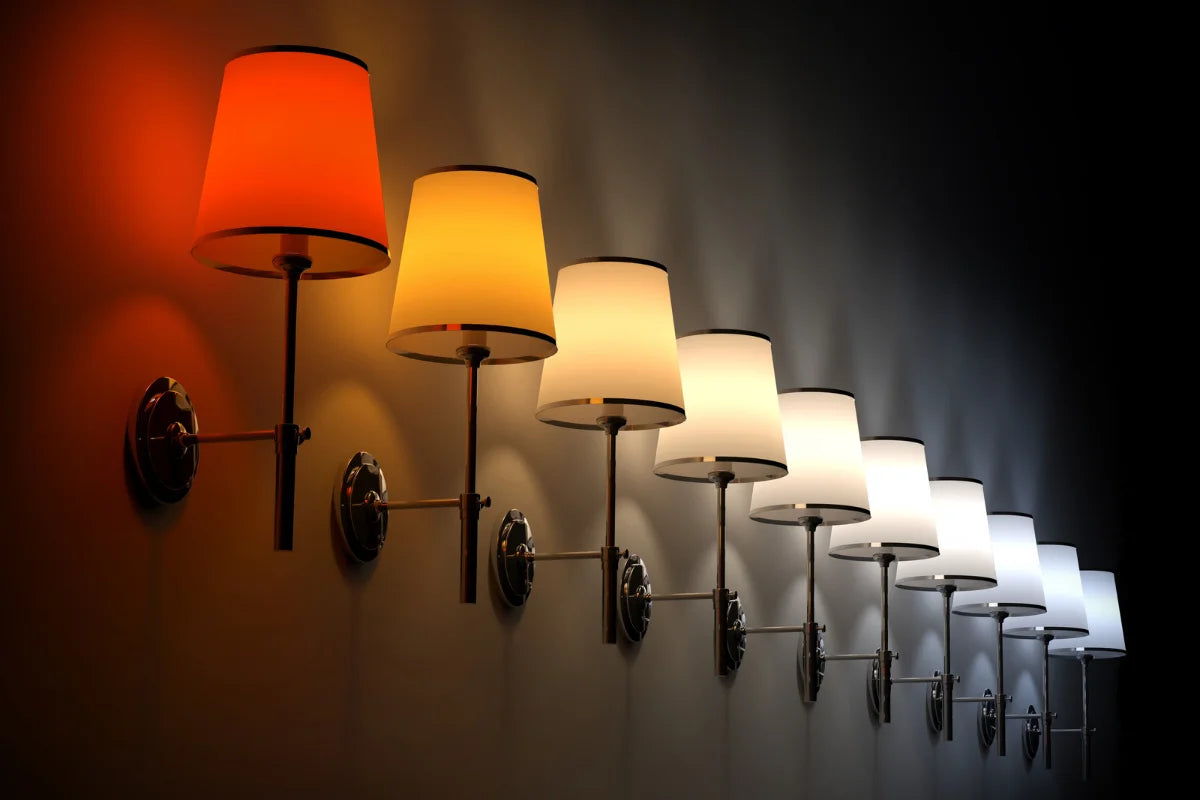What is Correlated Colour Temperature?
Correlated colour Temperature (CCT) is a specification that describes the colour appearance of light emitted by a light source, indicating its warmth or coolness. The light source could be incandescent, fluorescent, LED Light or even other traditional forms of lighting. It is measured in degrees Kelvin (K) and relates the colour of light from a reference source when heated to a particular temperature.
The CCT rating of a light source determines its perceived colour temperature, with higher values indicating cooler light and lower values indicating warmer light. For example, a light source with a CCT rating of 2700K will appear warmer, leaning towards a soft, yellowish-white colour, while a light source with a CCT rating of 6000K will appear cooler, leaning towards a bluish-white colour.
Understanding the importance of Correlated Colour Temperature (CCT)
The CCT rating of a light source is essential as it directly affects the visual perception and mood in a given space. Different environments require different lighting conditions to create the desired atmosphere and functionality. Here are a few key points to consider:
1. Impact on Ambience: The CCT rating of a light source can significantly influence the ambience of a space. Warm light, with lower CCT ratings, creates a cozy and intimate atmosphere, often preferred in residential settings or hospitality venues. On the other hand, cool light, with higher CCT ratings, promotes alertness and enhances visibility, making it suitable for offices, hospitals, or retail spaces.
2. Task Performance: The CCT rating also plays a role in task performance and productivity. In areas where detailed work or activities are performed, such as offices or workshops, higher CCT ratings are generally preferred. Cool light enhances focus, visual acuity, and reduces eye strain. In contrast, warmer light can be more soothing and relaxing, making it suitable for areas where people may need to unwind, like bedrooms or living rooms.
3. Colour Rendering: The CCT rating also affects how colors are perceived under different lighting conditions. Light sources with lower CCT ratings tend to make colors appear warmer and more vibrant, while higher CCT ratings can make colors appear cooler and more washed out. Considering the intended use of a space and the colors of objects within it is crucial when selecting the appropriate CCT rating to ensure accurate colour rendering.
Correlated colour Temperature (CCT) is a valuable specification that helps determine the perceived colour and overall quality of light emitted by a light source. Understanding the importance of CCT ratings allows for more informed decisions when selecting lighting solutions, taking into consideration the desired atmosphere, task performance requirements, and colour rendering needs of a space.
The Color Correlated Temperature Scale
The Color Correlated Temperature Scale, also known as the CCT scale, is a system used to describe the light color appearance of a light source in relation to its temperature. This scale is often used in the lighting industry to classify the hue of light sources, and it is based on the principle that as temperature increases, so does the color of the light.
Kelvin is measured for CCT (Correlated Color Temperature) using a standardized scale that assigns a numerical value to the color of light emitted by a source. This scale, known as the Kelvin scale, ranges from warm to cool colors, with lower values indicating warmer, more yellow tones and higher values representing cooler, bluer tones. For example, a candle flame has a CCT of around 1500K, giving off a warm, yellowish light, while a clear blue sky has a CCT of about 10000K, producing a cooler, bluish light.
Warm Color Temperature - 2700K to 3000K
Warm color temperature or in some cases referred as warm white light by major lighting brands. It refers to light that leans towards the yellow end of the spectrum, creating a cozy and inviting ambiance. This type of lighting is known for its relaxing and soothing effect, making it perfect for living rooms, bedrooms, and other spaces where you want to create a comfortable and welcoming atmosphere.
Cool Color Temperature - 4000K to 6000K
Cool color temperature or in some cases referred as cool white light or neutral white light (4000K) or daylight (6000K to 6500K) by major lighting brands. It is typically found in offices and production factories because it creates a productive atmosphere. The bluish-white light is known to increase focus and alertness, making it ideal for spaces where tasks and work need to be completed efficiently. This type of lighting is perfect for enhancing productivity and energy levels in work environments.
Measuring Kelvin using a Spectrophotometer
The measurement of Kelvin for CCT is typically done using a colorimeter or spectrophotometer, which measures the spectral power distribution of the light source and calculates the correlated color temperature based on the distribution of wavelengths. This process allows for an accurate and objective assessment of the color temperature of a light source, which is essential for applications such as photography, cinematography, and lighting design.
By precisely measuring the Kelvin for CCT, users can ensure that the color of the light emitted by a source aligns with their specific needs and requirements, resulting in optimal visual quality and color accuracy.
Choosing the Colour Temperature by Application
When choosing the colour temperature for lighting, it's important to consider the application. For example, in a kitchen or workspace, a cooler colour temperature around 4000K - 5000K may be preferred to create a bright and energetic environment. In a living room or bedroom, a warmer colour temperature of 2700K - 3000K can create a cozy and relaxing atmosphere. For outdoor lighting, a colour temperature of 5000-6000K may be preferable for increased visibility and security. Considering the specific needs and ambiance of each space will help in selecting the most suitable colour temperature for lighting applications.

